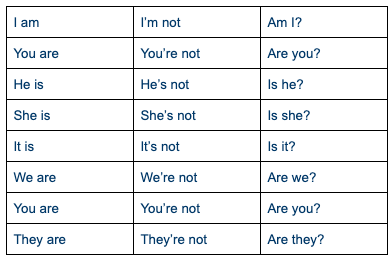The Present Continuous in English
Nov 07, 2019
The Present Continuous, which is used to describe actions in progress, is one of the most regularly used tenses in English. So let’s look at how to use this important form in detail.
Using the Present Continuous Tense
We use the present continuous tense in the following situations:
- to talk about actions and situations in progress at the moment of speaking. For example,
I’m reading a book.
She’s having dinner now.
- to refer to an ongoing long-term action. It may not be happening in this precise moment, but it’s happening in this general period of time. For example,
They’re not working with us this year.
He’s studying Economics at university.
- to talk about a planned event in the near future. For example,
They’re meeting the clients next Monday.
She’s not working next week.
- to talk about situations that happen frequently and are annoying, usually combined with the adverb ‘always’. For example,
My brother is always leaving dirty clothes around the house.
Sally is always complaining about her job.
- to talk about changing situations. For example,
She’s getting better and better at English because she practices a lot.
The weather is getting much warmer.
How to Form the Present Continuous

Affirmative sentences in the Present Continuous
To make affirmative sentences in the present continuous we use the subject followed by the appropriate form of the auxiliary verb ‘to be’ and the main verb in the -ing form.
Subject + am/is/are + verb +ing
Examples:
- I’m doing my homework.
- My sister’s sitting on the sofa.
- They’re riding their bikes.
Negative sentences in the Present Continuous
To make negative sentences in the present continuous, we simply change the auxiliary verb ‘to be’ from positive to negative.
Subject + am/is/are not + verb +ing
Examples:
- I’m not doing my homework.
- My sister’s not sitting on the sofa.
- They’re not riding their bikes.
Questions in the Present Continuous
To make questions in the present continuous you invert the subject and the auxiliary verb ‘to be’. So the structure is:
Am/is/are + subject + verb +ing
Examples:
- Are you doing your homework?
- Is your sister sitting on the sofa?
- Are they riding their bikes?
Verbs NOT used in the Present Continuous
There are many verbs that cannot be used in the Present Continuous tense. These are verbs that are not actions but describe states or preferences. For these verbs we use the present simple. For example:
I’m hating you. WRONG
I hate you. CORRECT
He’s loving the cake. WRONG
He loves the cake. CORRECT
Here are examples of preference verbs that cannot be used in the present continuous tense:
- to love
- to like
- to hate
- to dislike
- to care
- to mind
- to want
- to wish
- to prefer
- to appreciate
Here are some state verbs that are also not used in the present continuous:
- to know
- to remember
- to understand
- to forget
This rule also applies to the five senses:
- to feel
- to hear
- to see
- to smell
- to taste
And with verbs that express an idea or belief:
- to think
- to suppose
- to believe
- to feel
- to doubt
- to assume
- to consider
Other verbs that are only used in the present simple tense are:
- to seem
- to look (resemble)
- to be
- to have (for possession)